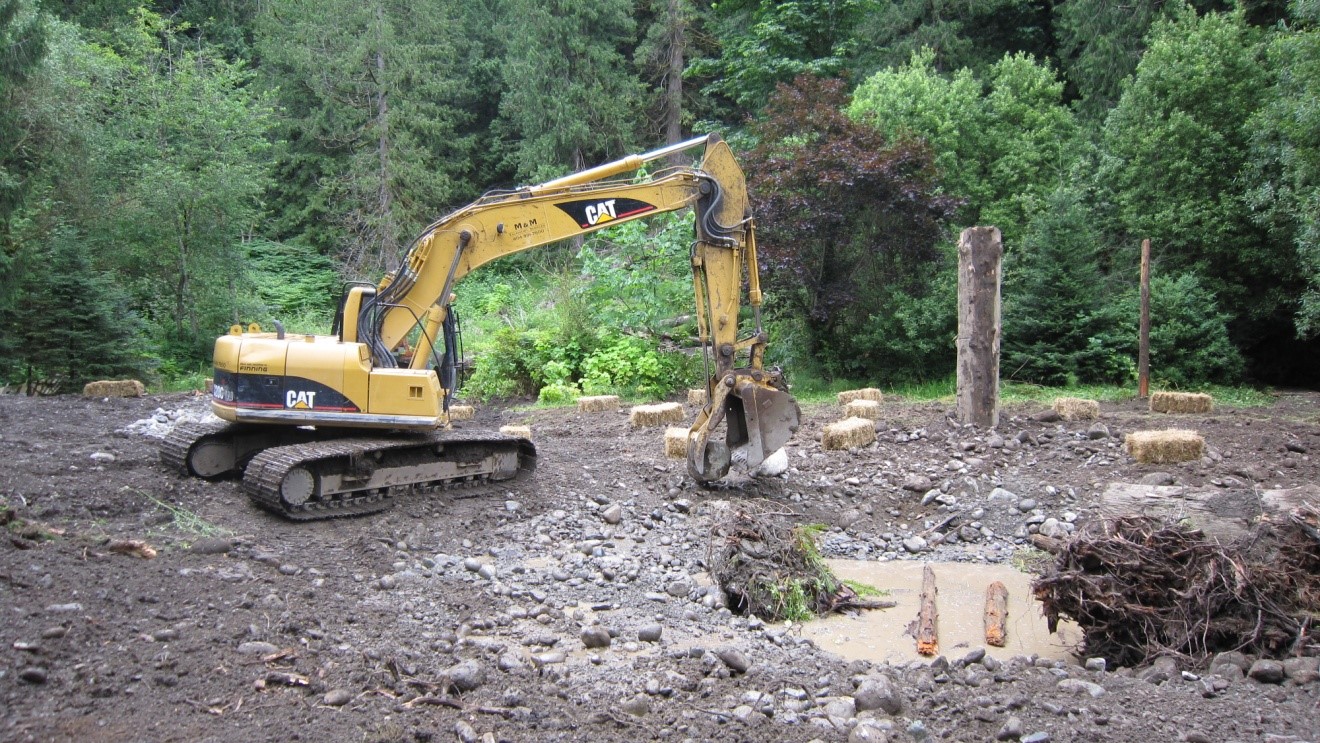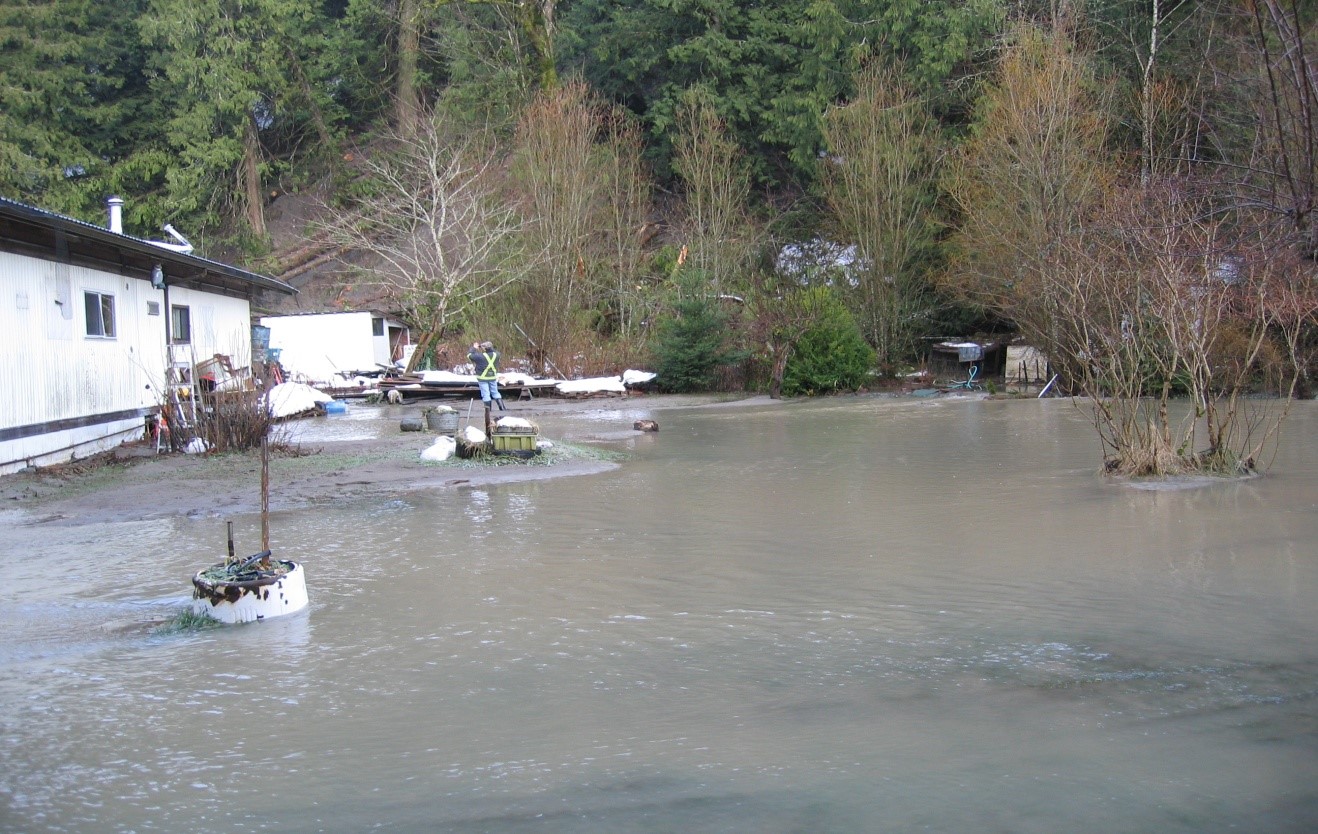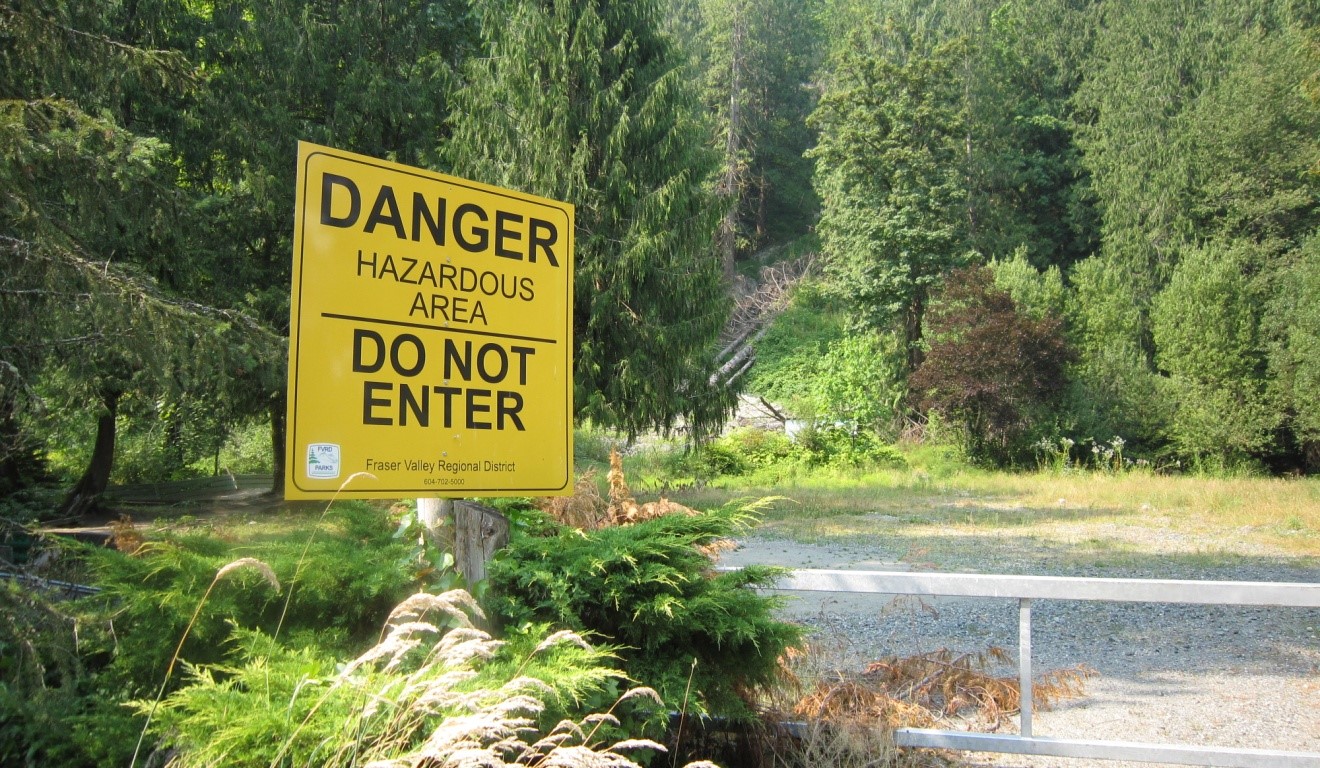The property housed residents until January of 2009 when an extreme weather event took place. Heavy rain and snow pack caused a landslide on the north side of Ryder Creek. The debris blocked the waterway, causing the mobile home of the residents to flood. Damage from debris buildup was also done to downstream fish habitat.
A state of emergency was declared. An excavator was brought in to clear the creek of debris. The property was designated as unsafe for human habitation and evacuated after geotechnical engineers declared the slope was unstable and prone to a similar slide in the future.
The land was purchased from those residence by the Fraser Valley Regional District (FVRD) and held until a plan for it could be created. It was then transferred to the FVC as our third acquisition. The FVC has the ability to help restore the habitat quality of the creek and protect the property as habitat for fish and other wildlife into the future.
In 2011, the FVC and the Chilliwack River Action Committee (CRAC) partnered to create a restoration project for the site. The goal was to reclaim the property to a natural state. With the help of volunteers, debris and old sheds and fencing were removed. The land was enhanced with natural debris, created a more complex habitat, and new native trees and shrubs were planted.



